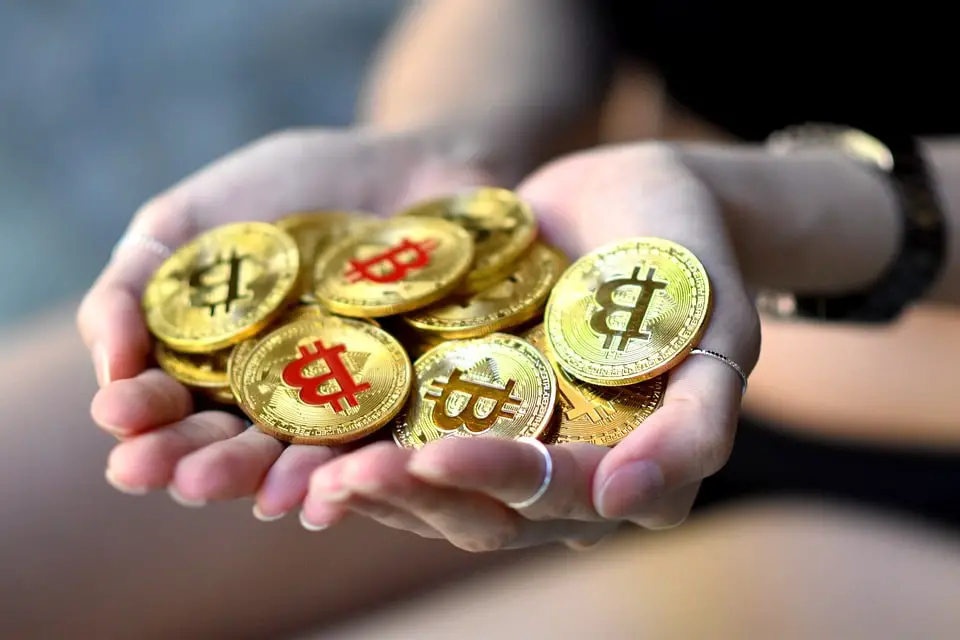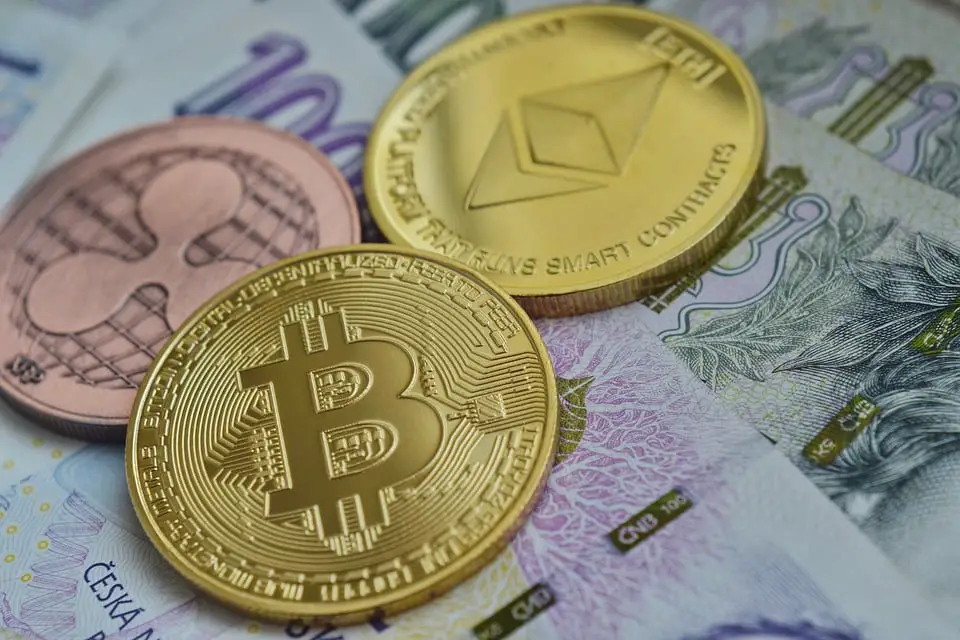ICO (Initial Coin Offering) -projects Following the results of 2017, one of the most popular queries in search engines was the fashionable word “cryptocurrency” among users. However, not everyone managed to take advantage of the hype and earn on such virtual currencies as Bitcoin or Ethereum. But do not despair. You can consider investing in cryptocurrencies, for example, the so-called ICO or Initial Coin Offering (initial placement of coins).
This is a new way by which some technology start-ups attract funding to develop their ideas and projects. The sale of tokens produced in the ICO process is carried out for fiat funds (USD, EUR, etc.) or cryptocurrency.

What is Initial Coin Offering?
ICO (Aisio) is a way to raise capital when a company develops and sells new virtual currency units (called tokens or digital coins). In simple words, the organization carries out crowdfunding using blockchain technology and digital currency.
Tokens can also be issued as a reward for services provided to the issuer as part of a referral or marketing campaign, for example, for promoting a project in social networks and forums.
Issued coins can be traded on cryptocurrency exchanges, exchanged for other digital money or pay for services online or on the platform of the project for which funds were raised.
As a rule, the issuing company establishes its rights in relation to tokens, but there is no single market standard for rights associated with the use of coins.
Now let’s look at what makes the ICO different from an IPO (initial public offering). The first is the creation of digital tokens based on a block chain and the so-called public book. An IPO is the distribution of shares among the population through investment banks, which are known as underwriters.
Each of these two methods of raising funds has its own characteristics, advantages and disadvantages. IPO is not available to anyone. It can only be used by private companies, so even authors of projects with big ambitions and good potential cannot access the IPO. This is a way that requires years of activity, resources and good reputation of the organization.
In terms of profitability, IPOs offer dividends from company profits to stockholders. Participation in ICO allows you to potentially make a profit due to the growth in the price of tokens against the background of the development of the project and its growing popularity. However, not all promises to developers manage to translate into reality, as well as to predict the prospects for the development of the project. Therefore, it is very difficult to talk about any predictions about ICO profitability.
The regulatory environment is also significantly different. Before a private company conducts an IPO, it must submit an application to the appropriate authorities and obtain permission. ICO, in turn, does not fall under the control of centralized bodies and departments, as decentralized platforms go beyond the legal framework of a particular country. In fact, they have no boundaries, as any inhabitant of the planet can participate in them. This makes it difficult to create a clear regulatory system for this sphere.

On the other hand, investors in an ICO carry more risks than those who seek to earn from traditional stocks and securities:
- The lack of regulatory mechanisms deprives investors of legal protection. They invest at their own risk and risk, as there is no guarantee of profit or protection against the loss of capital in the cryptocurrency industry.
- In this area, fraudulent ICOs and other scams are still flourishing quite widely, the creators of which do not seek to create and bring to market any product, but simply collect and appropriate funds from depositors.
Basic terms
As in any other financial or technical field in the ICO field there is its own terminology, the basics of which you need to know:
- Whitelist (“white list”) – registration in it allows the participant to qualify for participation in the tokensale.
- AML (Anti-Money Laundering Systems) – actions designed to discourage criminalization and money laundering, and the suppression of illegal money turnover.
- KYC – “know your customer” principle, which is a set of requirements imposed on sellers of tokens in accordance with the laws and regulations concerning the fight against money laundering, the observance of sanctions and efforts to combat the financing of terrorism).
- DAPP is a decentralized application created using smart contracts;
- ERC-20 is a standard or common set of rules for Ethereum-based tokens (most ICO tokens are compatible with ERC-20).
- NEP-5 is an abbreviation for NEO Enhancement Protocol, and NEP-5 is simply an addition to the NEO network that allows it to support tokens by analogy with Ethereum (the standard for this standard was ERC-20 and ERC-223).
- Hard cap (hard cap) – the maximum amount of money that the authors of ICO want to receive from investors (is the main financial goal and is always more than a soft cap).
- Soft cap (soft cap) – represents the lower limit, which is necessary for the team to implement the project (if the amount of funds collected exceeds the size of the hard cap, then extra funds, as a rule, are returned to investors).
- Hard fork – the division of a cryptocurrency block chain into two different branches (forks happen regularly before the network reaches a consensus on which branch to use, otherwise both chains become full separate networks).
- Seed round (seed round) – the initial stage of fundraising at the stage of early development of a new product or project.
- Private sale (private stage) – the first round of investment, during which voiced part of the roadmap (project implementation dates, information on the production of tokens and the required amount of investment), and investors have the opportunity to buy coins at the lowest possible price and more flexible conditions.
- Pre-sale (presale) – sale held before the start of the advertised main sale of tokens (often carried out for selected investors).
- Crowdsale (crowd sale) is a term for the process of collecting money by selling tokens and is often used as a synonym for ICO.
- ICO pool (ICO pool) – allows you to combine investors who have expressed a desire to become participants in the pre-sales stage (all contributions are made through smart contracts, and after the end of the ICO or reaching hard cap funds are transferred to the project developers)
- Road map (road map) – the project development plan, painted on individual specific points with an indication of the date of their completion.
- A smart contract is a digital contract that can be executed independently or forcibly.
- Wallet (wallet) – a place to store cryptocurrency (there are a desktop, hardware, mobile and online digital wallets).
- Whitepaper (white paper) is an information document used by ICO organizers to present their business plans and ideas to potential investors (traditionally includes detailed information on the project’s motivation and technical aspects of the platform or token).
- Yellow paper (“yellow book”) – a document containing the results of the study, which have not yet been officially adopted or published in an academic journal (is synonymous with the more widely used term preprint paper “pre-print book”).
- MVP (“minimum viable product”) – implements the basic idea of the final product, but does not have all the additional significant features.
- Airdrop (eirdrop) is a strategy for the wide dissemination and use of project tokens (for example, at an early stage of ICO, developers send coins to wallets selected randomly on a public blockchain and matching certain criteria).
- Bounty (bounty program) is a specific marketing strategy that startup authors use to promote their project and attract investors (they can be awarded for distributing referral links to a project, investing large amounts, identifying errors in the program code, etc.).
How to choose ICO
Choosing a good and promising project is an important step in investing in cryptocurrency. You need to approach it carefully, carefully studying each specific ICO. Below are the main points that you should pay attention to before investing money in the project you like:
- The composition of the team and advisors.
- The study of technical documentation.
- Participation in the project of funds and large investors.
- Access to software code and its quality.
- Road map.
- Availability of airdrop and bounty program.
- Learning metrics.
Team and Advisor Analysis
When studying the composition of the developers and advisers of the ICO should adhere to strict criteria. They are the face of a project by which one can judge its reliability. Highly qualified and experienced professionals will not engage in fraudulent projects or scam, as their reputation is at stake. In addition, a team with good practical experience has more chances to realize the promise in the project documentation and not get out of date.
The presence of respectable and experienced developers and advisors in the team is always a good sign, which testifies in favor of the potential prospects of a startup. Consideration should also be given to having the experience of participating team members in previous successful projects.
Projects on sites with no photos of team members, links to their profiles in social networks, or the presence of nicknames instead of the real name and surname should be treated with caution. Those who have nothing to hide will never be afraid to reveal their identity to potential investors.
White Paper Analysis
Technical documentation is for ICO investors a source for obtaining a full or brief description of the project, its concept in the light of program needs. There are minimal unofficial accepted standards, which provide for the following clauses in the White Paper:

- clear description of the program need or problem to be solved;
- the purpose of the proposed startup and its relationship with the program need;
- specific objectives of the proposed work that are consistent with the objectives (objectives) of the project;
- the identification of deficiencies in the decisions of previous projects or technologies and the possibility of overcoming them with the help of new methods;
- risks and problems associated with the proposed job;
- how and why the proposed idea can be considered innovative;
- The reasons why the proposed work is capable of changing a specific situation in its field and/or exerting influence outside it.
Availability of funds and large investors
Participation in ICO of large investment funds and private investors should be taken as a good sign. For such organizations, as a rule, there are entire expert groups that carry out a thorough selection of projects before participating in them.
Private investors, operating in large capital, will also not risk their own funds to invest in suspicious or unreliable startups. People who made a fortune on investing money have sufficient experience for further successful investment activity.
The most successful funds in terms of ROI (Return on Investments – return on investment) according to the team Token Metrics.
Availability and quality of program code
When analyzing the code, you should make sure that it does not contain errors, malware and various kinds of vulnerabilities. Of course, not every investor can boast of programming skills. To do this, you can use the already prepared review code, which are often published on the Internet. The main thing is to make sure that qualified security researchers worked on code auditing. The quality of the code can tell a lot about a startup, in particular about the seriousness of the intentions of the ICO initiators.
The most popular code reviews from Andre Cronje.
Road map – ICO

Usually, the project implementation plan is published by the authors of the project on the official website, but sometimes it is posted directly in the White Paper. Studying the roadmap, you should pay attention to what period it is calculated, the presence of the launch point of the test product. A startup development plan should not be very scanty, but the presence of an excessively large number of functions and technologies that are scheduled for launch in a relatively short period should also be alerted.
If at the time of the ICO there is already a test product, MVP or alpha version of the finished product – all this adds confidence in the project.
Bounty campaign and airdrop
The presence of an eirdrop, like a bounty program, cannot be unambiguously considered as an advantage of ICO. Free distribution of tokens, as well as remuneration for participation in the bounty campaign, is not a testament to the reliability of the project. On the other hand, history knows examples of Ontology and Definity projects.
Startup authors use these methods to draw attention to their project. At the same time, they do not spend real money on marketing, but reward Internet users with tokens for placing referral links, text or video content with an ICO review on social networks, forums (for example, BitcoinTalk) and on other resources. Neither the users nor the authors of the ICO risk anything, even in the event of a project failure.
It is necessary to consider the timing of payments for bounty programs and what percentage they make about the total number of tokens. It is more profitable for the investor that the bounty rewards should be paid after listing the token on the exchange.
Analysis of metrics and project categories
The metric token is a very important tool for analyzing ICO (not to be confused with tokenomics). The main question to which the analysis of token metrics answers is the attractiveness of investing in terms of the potential of the maximum ROI of the project.
Consider the basic token metrics:
- Token sale hard cap – we wrote about this indicator above. Also analyze the difference with Soft cap, the bigger it is, the more doubtful is the need to collect the “hard cover”.
- Timing to obtain tokens. They can reach up to several months.
- % of tokens allocated for public sale (% of tokens distributed to public).
- The total valuation of the project (Total valuation) is considered by dividing the token sale hard cap by the% of tokens allocated for public sale. For example, if the project “asks” $ 15kk for 30% of tokens, then it estimates itself at $ 50kk ($ 15kk / 30% = $ 50kk).
- Discounts for presale (Pre-sale discount) – discounts for early investors.
- Lock for presale (Lock-up, vesting period) – period in which the transfer (sale) of tokens is limited by a smart contract. As a rule, it is used to prevent tokens from being “drained” by early investors, the project team.
Let’s analyze 2 real ICO projects that have recently published their token metrics:
| Project | Origo | Cryptocurve |
|---|---|---|
| Type | Blockchain | Wallet |
| Token sale hard cap | $ 30 000 000 | $ 32,000,000 |
| % of tokens allocated for public sale | thirty% | 50% |
| Total Project Evaluation | $ 100,000,000 | $ 64 million |
| Presale Discounts | 17% | 25% |
| Lock for Presale | Yes | Yes |
Before us are 2 projects from different subjects. Which one would you like to invest in?
At first glance, Cryptocurve collects more money and has a bigger bonus for early investors. However, Origo collects $ 30kk for 30% of tokens, while Cryptocurve sells 50%. Given that for early investors, Lok is set (that is, for some time they will not be able to sell their tokens), as well as comparing the overall project estimates, other things being equal, Cryptocurve has a greater ROI potential.

However, not all so simple. The theme of the project is also important. According to statistics, Blockchain, as an infrastructure project, has a greater ROI than projects from other areas.
Source: ICO returns study
How to participate in ICO
Most ICOs are based on the Ethereum blockchain with the release of ERC-20 standard tokens, so you first need to create a corresponding wallet. The most popular of them are three:
- Ethereum Mist Wallet.
- Metamask.
- MyEtherWallet.
You need to invest in ICO from a wallet from which you have a private key. Never use the exchange wallet for this, otherwise your acquired tokens will be lost.
If ICO does not take place on the Ethereum platform, but on Stellar, ICON, NEO or another, then you may need a wallet created on one of them. Be sure to study this moment.
Stages of
Sale of tokens usually takes place in several stages:
- Private Sale (private sale) . This is the first investment proposal, before which the deadlines for the implementation of the idea are announced, the amount of coins available for sale and other information that is published on the official website. Sometimes there is a closed pre-sale to collect investment for the official launch. At this stage, you can usually buy coins with a maximum discount (bonus), but the minimum investment amount can be from $ 100,000.
- Pre-ICO or Pre-Sale . Fundraising before the main stage of the ICO. During the pre-sale, the cost of tokens is traditionally lower than that of the main stage, but higher compared to a private sale. Investors can count on bonuses and discounts. Most of them consider this stage potentially the most profitable. They seek to buy tokens at a low price, and then sell them more expensive after the start of trading on the exchanges. This is a form of short-term investment. The minimum investment amount for this stage can also be high for a private investor and range from $ 10,000.
- CrowdSale (crowdsale) . The main stage of the sale of tokens. Initially, some startups offer to invest funds through their website, but sometimes tokens are sold through cryptocurrency aggregators. The minimum investment can range from $ 100. Almost all private investors are involved at this stage.
WhiteList and KYC
The KYC verification system is a set of steps that an investor must take to verify and verify his identity.
The organizers of ICO projects are implementing the KYC procedure in order to comply with international law regarding the fight against money laundering and the prevention of the financing of terrorism.
The process of passing KYC is carried out before buying tokens on the official project website and requires the following actions:
- Filling out the form (you must enter the requested data).
- Download a scan of the required documents confirming the identity of the investor and the selfie, which clearly shows the face of the document holder and the document itself (as a rule, it is a passport or biometric passport).
- Sending application.
- Waiting for a letter confirming the passage of the test.
General factors preventing successful use of KYC:
- False personal data.
- Incorrectly made, fake or blurred photograph of the holder of the documents and the documents themselves.
- The applicant has citizenship, residency or registration in the United States, China, the Republic of Korea, New Zealand, Canada, Singapore, the Cayman Islands and other countries in which ICOs are officially prohibited by law.
In case of successful confirmation of identity, the applicant is entered into the “white list” of the ICO (WhiteList).
Purchase tokens
After registering, going through all the procedures and replenishing an ETH account, all that remains is to send the cryptocurrency to the address listed on the startup website and buy ICO tokens. The main goal of each startup is to attract the necessary amount of funds, so the authors of the project tend to make the entire purchase process as simple as possible. In most cases, the startup site has detailed recommendations and instructions.
We described how to send ETH from a metamask wallet earlier.
Issue tokens
The issue of coins is carried out in different ways. Sometimes this happens through a smart contract automatically, and sometimes manually by the project team. Depending on the conditions of ICO, investors may receive tokens immediately after payment, after the sale period is completed, and even some time after the crowdsale.
In the course of the distribution of tokens, in addition to the sale, part of the coins is allocated to the project team and advisors, partners, for airdrop and bounty programs, for maintaining the platform’s ecosystem, forming a reserve fund and other goals.
Sales strategies for tokens
There are two common ways to make money selling coins after an ICO:
- Going Short (short-term investment in tokens) . Provides for the sale of coins immediately after the start of their trading on the stock exchanges. This strategy will be useful only in the case of investing large sums in ICO, which allows you to make a profit even in the case of a small increase in the price of the token after its release on the stock exchange.
- Going Long (medium and long term investment) . This strategy is used by investors with the intention to sell the purchased assets in the future with the expectation that their price will increase over time. This approach is only suitable for ICO with a really worthwhile idea and a certain potential.
How much can you earn on ICO
Predicting potential earnings in the field of cryptocurrency is extremely difficult. This ecosystem is characterized by high volatility and drastic changes.
As with any other type of business, the potential for failure or success depends on many factors. The potential profit that can be obtained by participating in the ICO is called leverage. Entry at the right time will provide leverage thanks to a price advantage. Later, if the project becomes successful, you can receive passive income in the form of capital gains against the background of the rate of tokens.
However, you need to be prepared for losses if the project does not succeed.
ICODrops project profitability statistics: https://icodrops.com/ico-stats/
Possible risks
It should be borne in mind that even projects that are not a scam, have a good team and a worthwhile idea, do not guarantee profit from the purchase of tokens. Coins of many startups, as a result, are sold on exchanges at face value and sometimes lower than it.
To choose a good ICO, in which you should take part, you must act with a high degree of prudence and caution. You must decide on a project that will make a profit in the long term. This requires a lot of effort and time to analyze and study the market.
Conclusion
Against the background of growing popularity of cryptocurrency, many millionaires and even billionaires appeared in the world. The new cryptocurrency ICO is the place from which digital money originates. The ability to recognize among the masses of various startups potentially successful projects, which are based on original and useful ideas, can help significantly increase capital.
You should not wait for this or that coin to hit the front pages of online media. Such moments are ideal to sell tokens, not to buy. Do your research, study the reviews of reputable experts and analysts, chat with other investors in forums and social networks.
But remember that you should always make only a conscious choice and not give in to emotions. Investment is not a gamble.















